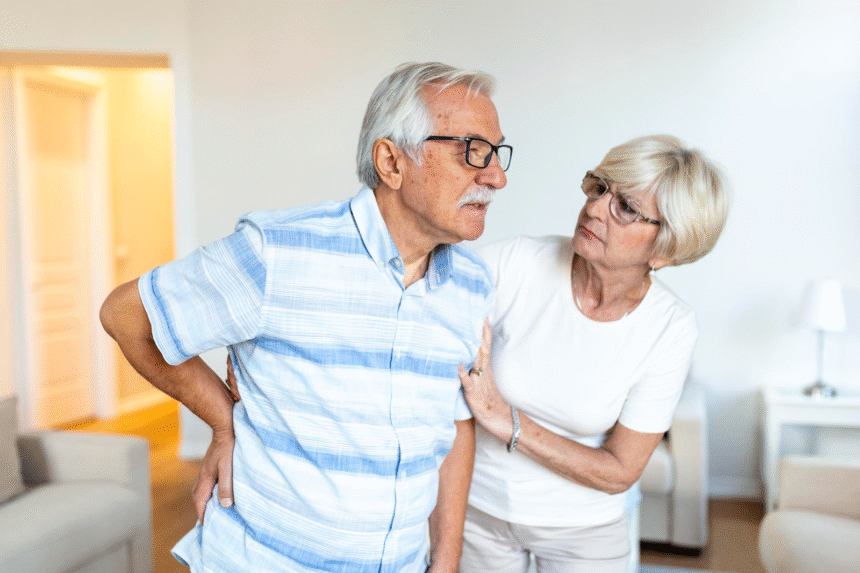Joint and muscle pain increases as we get older. Around 70% of adults between 50 and 80 say they have pain in their joints, and more than half describe it as moderate to severe. Women deal with more joint pain than men. Black adults and those with less income or education also see rates above average. Arthritis is also common. About 21% of adults in the United States have this diagnosis, with half of those being over 65. For older adults who already have conditions like heart disease or COPD, over half report arthritis too. Osteoporosis is another issue, especially for women. Reports show that about 20% of women over 50 have this condition compared to less than 5% of men.
Low back pain becomes more common each decade. Each year, up to half of adults over 65 say their lower back hurts. This pain is often lasting, especially for those over 80. Still, many older adults do not use available options for relief. Fewer than half use pain relievers like ibuprofen, and only about 18% report using physical treatments like spinal manipulation. When seniors do start gentle strength training, muscle soreness remains mild and the body adapts in a day or two. This supports continued exercise, as pain does not build over time.
Tai Chi, a gentle activity, lowers knee pain for people with arthritis. Regular practice leads to less pain and more movement, as shown in studies using the WOMAC pain scale. Anti-inflammatory diets, such as those based on fish, olive oil, and turmeric, also show promise. People who eat this way report less daily pain. Adding curcumin through special supplements has helped some who cannot control pain with diet changes alone. Psychologists have tested mindfulness for pain in older adults. These programs help people accept pain and stay active. Some studies found pain acceptance could improve by more than 20%, and physical activity could increase by up to 18%.
Everyday Relief Tools for Joint and Muscle Pain
Options for self-care now cover a wide range, from traditional hot-cold packs and topical menthol gels to newer formulations. Many people use nonsteroidal creams, arnica, or capsaicin ointments to manage pain in hands, knees, or lower back. Some prefer herbal blends or magnesium lotions. There are also plant-based solutions focused on localized relief. For example, products labeled cbd roll on are often used alongside lidocaine patches or hemp balms, especially after gentle stretching or light exercise. Each of these options offers a different approach to addressing sore spots without reaching for oral medication first.
Untreated pain in older adults has risks outside of discomfort. Each year, about 36 million falls happen among older adults in the United States. Many of these falls are connected to pain that limits movement. One in four falls leads to a broken bone or head injury. Besides joint and back pain, about one in five adults over 20 will deal with neck pain. For those over 70, almost 40% have hip arthritis, and more than 60% in some rural areas report knee arthritis. Headaches change with age. For seniors, tension-type headaches are most common, but secondary causes get more likely, including issues that need urgent care.
Sarcopenia, which means a loss of muscle, hits about one in five older adults in China. Risk goes up for people who smoke, have lower weight, or poor nutrition. Less muscle makes pain and weakness in joints more likely. For many, pain becomes a part of daily life. About 45% of seniors say they have pain every day, but only about two-thirds use any kind of over-the-counter pain reliever.
As more people look for help, new research comes out. Some studies show chronic pain peaks around age 65 and drops off slightly for those older than 85. This goes against the old idea that pain only gets worse with age. More than a third of patients look online for ways to manage pain. Social media and health blogs offer support and ideas, with many finding a sense of community through reading and sharing stories about coping. Short exercise clips online help people with arthritis use gentle movements at home. Seated stretching routines help nearly half of older adults improve their range of motion.
Doctors note there are still treatment gaps. Older adults use anti-inflammatory drugs much less than younger people, and non-drug therapies get overlooked. Safer options like physical therapy, mind-body activities, and dietary changes are shown to work, but many people do not hear about them at check-ups. Studies recommend starting with low-risk treatments and moving to prescription drugs only when other steps do not help.
Simple steps and trusted options give adults more control over pain as they age. The facts show a wide range of choices, many of which do not require a prescription and fit into daily routine. Clear information and steady habits can help most people reduce pain and keep moving.















